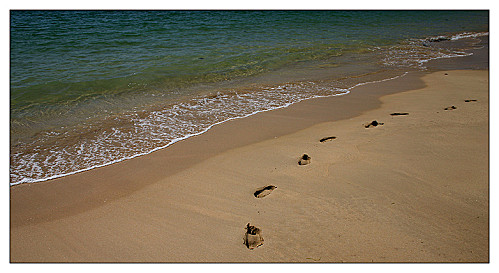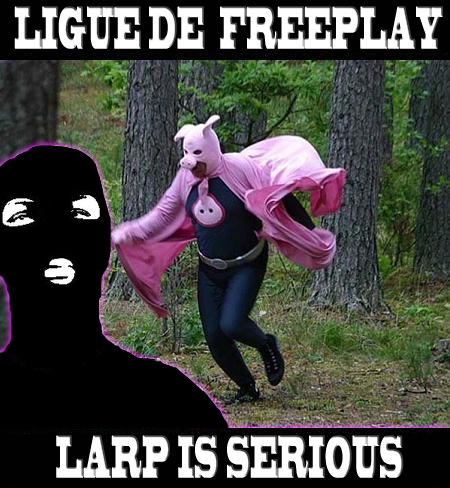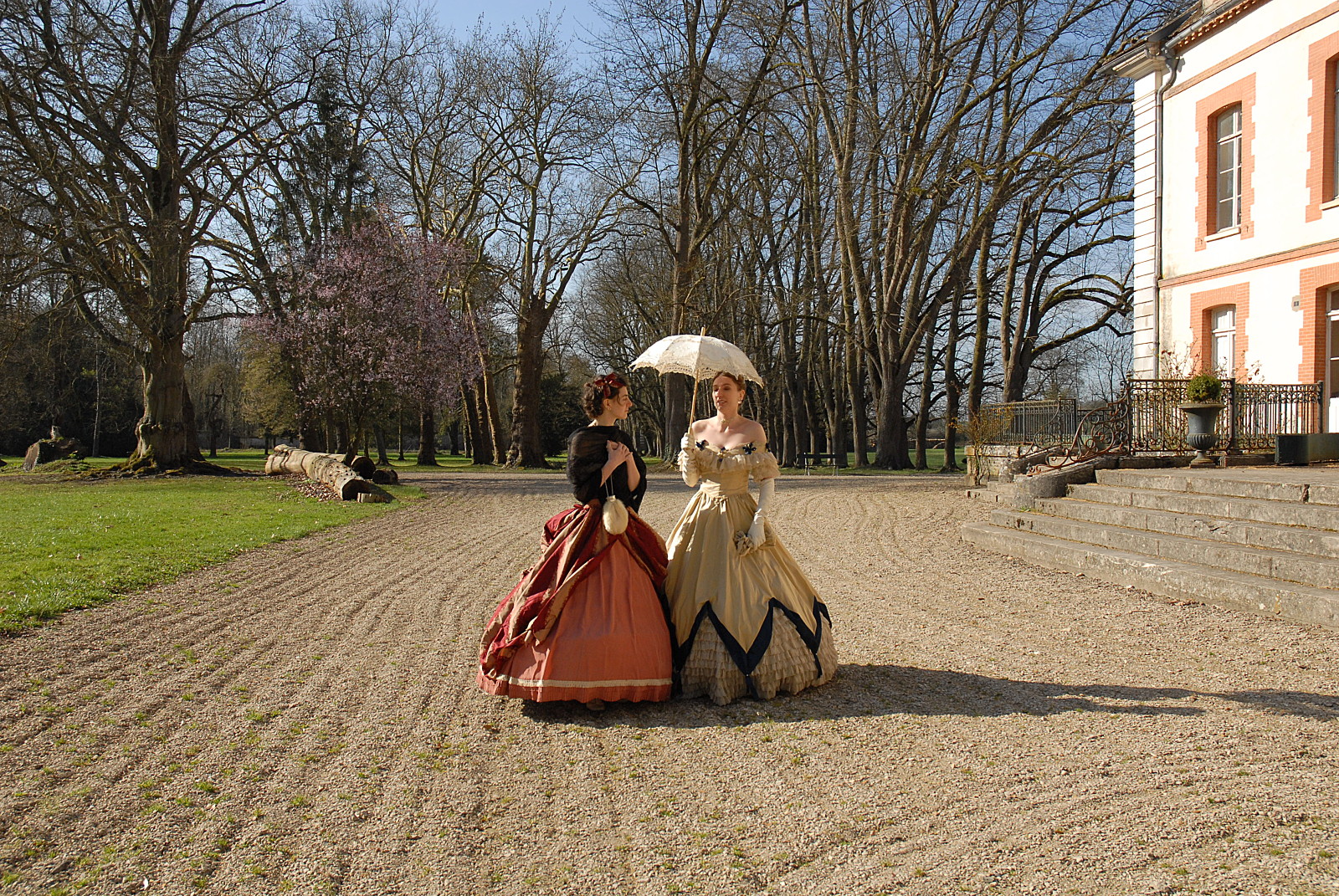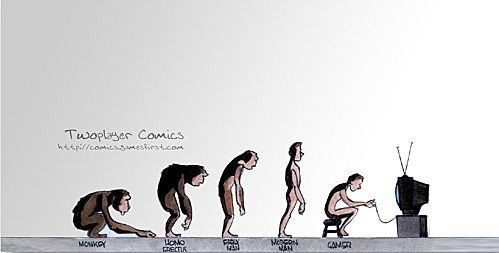Original article: http://www.electro-gn.com/1315-quelles-traces-pour-le-jeu-de-role-grandeur-nature-partie-3
Translation: Leïla Teteau-Surel
—
I talked about the larp testimonies and tried to make you aware of this issue for your next larps. It’s now time to see which testimonies we can leave and how to think about them during the game creation.

The assumption made by these articles is to say the testimonies left by a larp run shoudn’t be left out but quite the opposite, for two distincts audiences and aims:
– The first audience is the larp community who needs to feed itself with everybody’s creations in order to evolve. A game that leaves no public testimonies and survives only in the participants’ memories is a game that ‘ll be quickly forgotten and only a few people ‘ll be able to learn from it. The word of mouth (which plays an essential role in the larp’s knowledge’s transmission) has its limits and obviously we ‘d talk less about nordic larps if their authors didn’t organize a proper documentation.
– The second audience aimed at is the general public who doesn’t know larps and has often trouble in understanding how a game run takes place. The interest of a communication targetting specifically the general public could be discussed but this is not the point here.
Two audiences means different kind of testimonies with different roles. In my opinion it’s important to differenciate the pre-larp testimonies, which are the organizers’ responsability and the post-larp testimonies, that can be chosen and shaped by the organizers and also the players.
The pre-larp testimonies :
– Larpscript : scenario, characters’ sheets, document explaining the world, rules…
– The website and its specific aesthetics
– Teaser
– Visuals for the atmosphere
– Music (already existing or created for the event)
The post-larp testimonies:
– Pictures
– Videos (credits, documentary or something else)
– Criticism/Reviews
– Informal reviews from the players (for example on forums, but these forums are often used by the insiders)
– Public report from the organizers
– Multimedias elements that had a space in the game world (a Star Wars’ game program for example)
– Material memories (players consider them as important but their interest is limited)
If these lists aren’t thorough they already give an idea of what could be workable. We have to admit that it’s not a lot. If we think about what can give a precise idea of what was a larp run to someone who wasn’t there, the list is even shorter.
– We already discussed the photography in the previous part. A picture gives an image from the game but nothing more (the image is biased because the larp wasn’t probably that beautiful) and is then not so useful alone.
– A video provide image and sound and might seem a good communication tool. However we’ll soon see that video (that can be of different shapes) is a medium difficult to handle..
– Reviews from players have the flaw (that could otherwise be considered as an advantage) to show only what lived one character and so to not really show the whole game.
– There’s not a lot of objective organizers report on their game (what did we try to get, did it work, how was it and so on) but electro-GN seems to develop it more and more with Radio-GN (N.d.t : short radio programme focusing each time on a different game) and the Beau Livre project (N.d.t : a book gathering French larps reviews with nice pictures). You can notice that still, it is about the organizers point of view and not at all about the players’.

Besides the larpscript which, in the best case, is made in order to give the possibility to others to reorganize the game, very little testimonies are considered as such by the organizers, or at least not aiming at people who didn’t play. Most of the testimonies (visuals, pictures, videos, music) are memories for the players but aren’t usable as such, there’s a need to work on them to make them accessible, both to a random person and to a larper who wasn’t there.
The issue of videos
Videos are interesting because they can have different shapes. They might be used as teasers, as a part of the story, as a documentary, to “commemorate” the larp…
Arte’s larp video (N.d.t : in october 2012, a French TV channel organized a larp which was the sequel of the movie Tournée) is interesting : this is a great example of a game where the testimonies were thought beforehand, where it’s planned to film the run and to product a tangible and meaningful testimony of the experience. But in my opinion this video isn’t a success. Why ?
If the professionnal editing is extremly good, the video suffer from its unclear position. Indeed either the video is an artistic creation going along with the game creation (as it seemed to be with Arte) either the video document the experience (which seems to be the final result). Even though the video looks like a documentary, it explains nothing. A non initiated person can’t gain a knowledge from it about what a larp might be but simply (we hope) curiosity. In short, Arte example shows how difficult it is, even for pros, to make something accessible and really rendering the event in itself for a layperson. It opens a field on the way we, larpers, could document our larps in videos.
Even if you need technical skills to be able to do something good with it, video is a rather amazing tool. Nordics authors give us some food for thought from their own games ; indeed they copiously used videos of different kinds to document their games (Stephane Rigoni’s articles about Nordic larp. Ndt : in French).
I think about Kapo’s video which is simply a portrait of each player with a sad background music. This testimony is interesting because it was elaborated and contributes to the game’s reputation. One shouldn’t underestimate the role of the legend in the formation of a larp memory. Nordics aren’t the only one concerned since we also have our mythical larps in France.
A larp becomes a legend when its documentation (the testimonies left) is thought (with secret or with transparency, it doesn’t matter). The example coming to my mind is L’Agonie du Poète from which the testimonies are deliberately erased except for the laudatory word of mouth which naturally contributes to making the legend grow.
A practical case
I’m currently writing a game (Carmen Chabardès you might have heard about here. N.d.t : in French), and I thought about the way I could think about the testimonies of this game to give them a real meaning. I’ll present you my reflexion here even if no idea is decided yet so it could evolve.
=> Since it’s an experimental game its seems important to me to write a detailed report after the first runs to analyze what worked, what didn’t and why. It means offering a detailled and objective report of the exerience in the way Bross does when he tells us about the Paradis Carmin (N.d.t : in French) experience on the larp Kandorya. Such report are very interesting and it’s a pity we can’t read more of them on the blog.
=>The game is composed of several scenes in which each character ‘ll have one stake and only one. Then it could be interesting to give infos about the characters to the photographer before explaining which pictures of which relationship should be taken in the scene. For example, in a scene my character A is in conflict with my character B ; I can tell my photographer to focus on this relationship in order to produce a strong image for each character and each scene that ‘ll perfectly give back the game’s intention. In this case the picture is taken the other way round than it’d usually be : which means capture what is in front of you and then try to make emerge the most relevant pictures for the event. Why not working this way and see what happens?
=> Since a loud music should mark the end of each scene, and since the game focus on the life and death of each character it might be interesting to catalogue the characters’ evolution during their life with a video show.
It’s a short larp and I don’t see other angles to work on for the moment, but I only thought about it for ten minutes. Think about all the possibilities you have as a larp organizer!
Questions and conclusion
If we consider the interest of thinking about larp testimonies, we have to face several questions. Where and how to share the testimonies ? How to shape them for the general public and is it the organizers that should take care of it? What is the best communication medium for larps today we should give priority to?
Daniel B, a belgian larp star, raised at the end of the first part a question I find very interesting : how much is an organizer legitimate to create alone the legend of its game. Indeed if the organizer is a creator, it still depends on the players. In this case, should organizers and players put heads together in order to arrange the larp testimonies they all created together?



